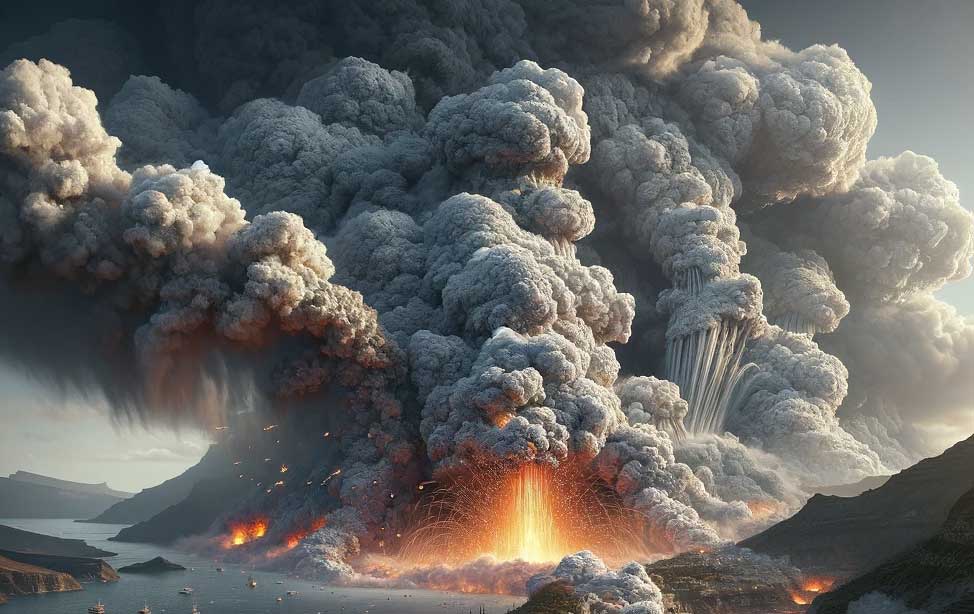The cataclysmic eruption of Santorini in 1600 BCE
The volcanic eruption of Santorini, one of the most significant geological events in human history, profoundly shaped the landscape of the Aegean Sea and had far-reaching effects on the civilizations of the region. This cataclysmic event occurred around 1600 BCE on what was then a single island known as Strongyle, which means “round” in Greek. The eruption led to the formation of the current geological caldera and significantly impacted the Minoan civilization, centered on the nearby island of Crete.

The Magnitude of the Eruption
The Santorini eruption is estimated to have been one of the largest volcanic events on Earth in the last few thousand years. The explosion ejected a massive volume of material, with estimates ranging from 30 to 60 cubic kilometers of ash and pumice into the atmosphere. This colossal outburst resulted in a plume of ash that is believed to have reached the stratosphere, spreading fine ash across vast areas of the Eastern Mediterranean and beyond. The fallout from the eruption would have caused significant climate anomalies and cooling effects across the Northern Hemisphere.
Formation of the Caldera
The most striking result of the eruption was the creation of the caldera, a huge depression formed as the island’s center collapsed into the emptied magma chamber below. The caldera is now filled with seawater, forming a lagoon that is surrounded by steep cliffs on three sides, with the remaining island of Santorini encircling it. This geological formation is considered one of the most dramatic landscapes in the world, attracting millions of tourists to Santorini annually.
Impact on the Minoan Civilization
The eruption of Santorini had a profound impact on the Minoan civilization, which was at its peak at the time. The subsequent tsunami generated by the volcanic explosion is believed to have devastated the northern coast of Crete, the heartland of Minoan society. The ash fall from the eruption could have also caused a significant downturn in agricultural productivity in the region, contributing to the decline of this once-flourishing civilization. The exact relationship between the eruption and the decline of the Minoans is still a subject of research and debate among historians and archaeologists.
Archaeological Discoveries
The town of Akrotiri on Santorini, preserved under layers of volcanic ash much like Pompeii, provides valuable insights into the pre-eruption civilization. Excavations have uncovered well-preserved buildings, frescoes, pottery, and everyday objects, offering a snapshot of life in the Aegean during the Late Bronze Age. These archaeological findings have been crucial in understanding the advanced level of society and the extensive trade networks of the time.
Legacy
The eruption of Santorini continues to fascinate scientists, historians, and tourists alike. Its study has contributed significantly to the fields of volcanology, archaeology, and climate science. The event has also permeated popular culture and mythology, with some speculations linking it to the legend of Atlantis. Today, Santorini’s dramatic landscapes, shaped by this ancient cataclysm, stand as a testament to the powerful forces of nature and their ability to reshape civilizations and the Earth itself.
